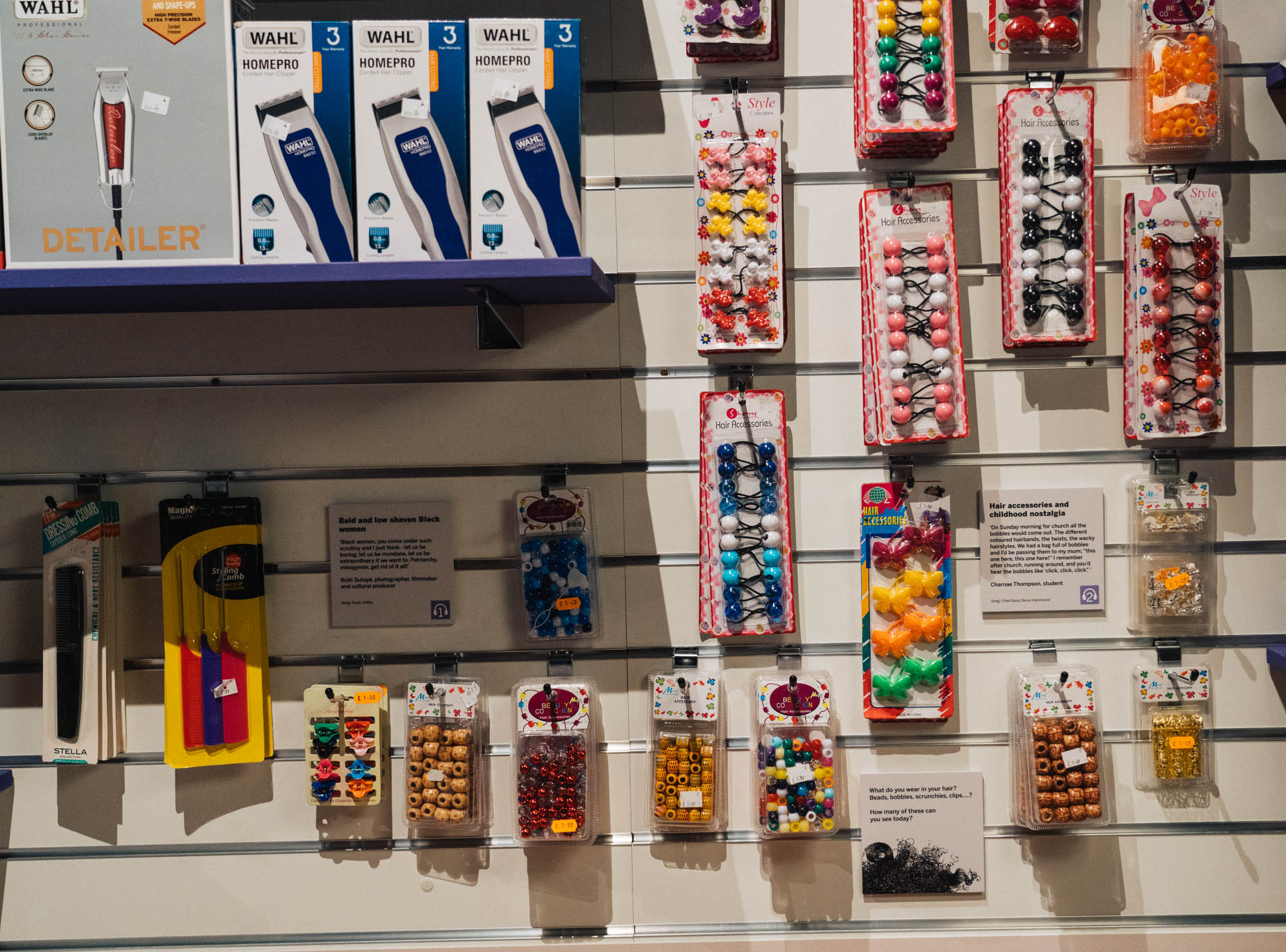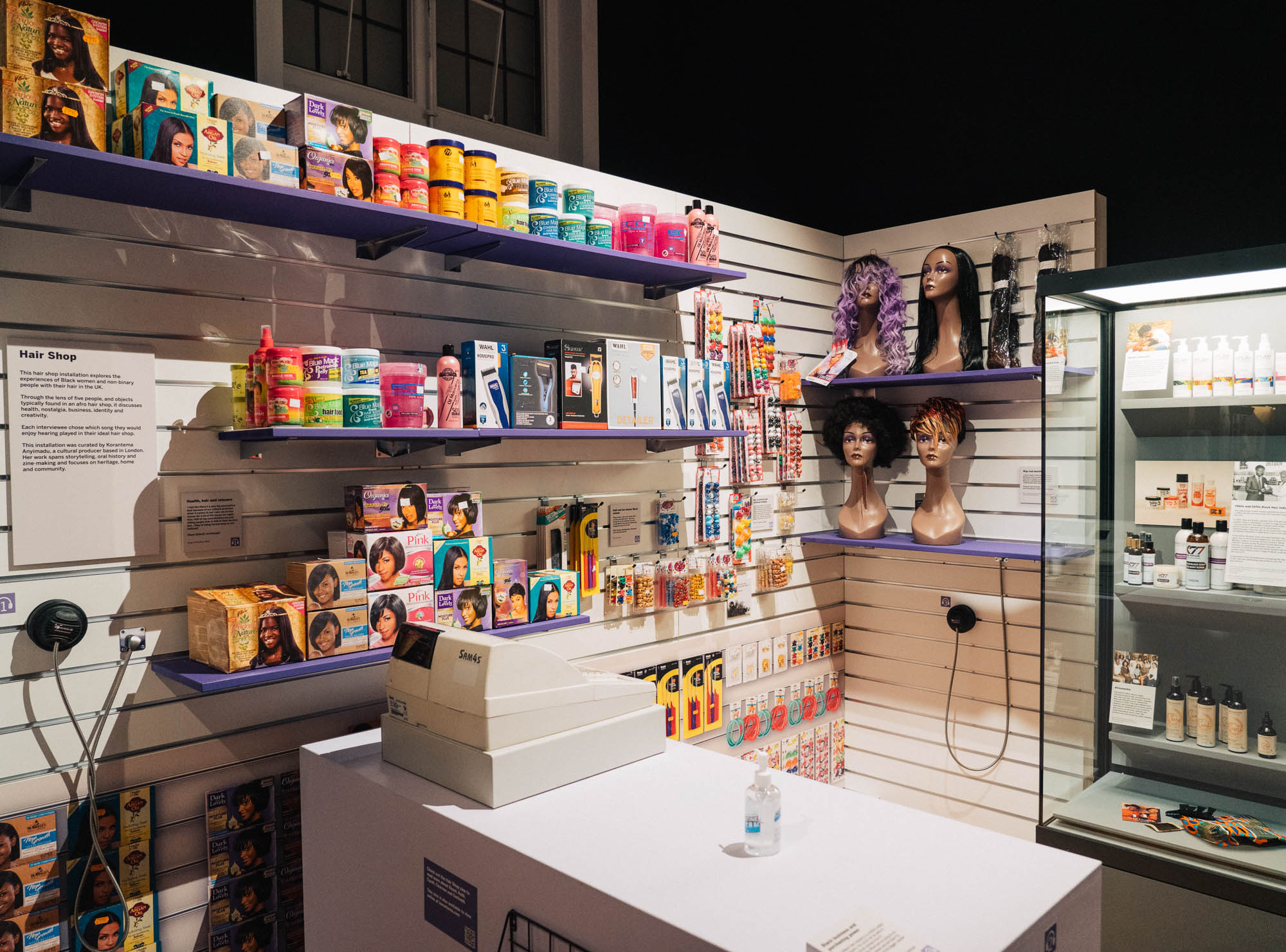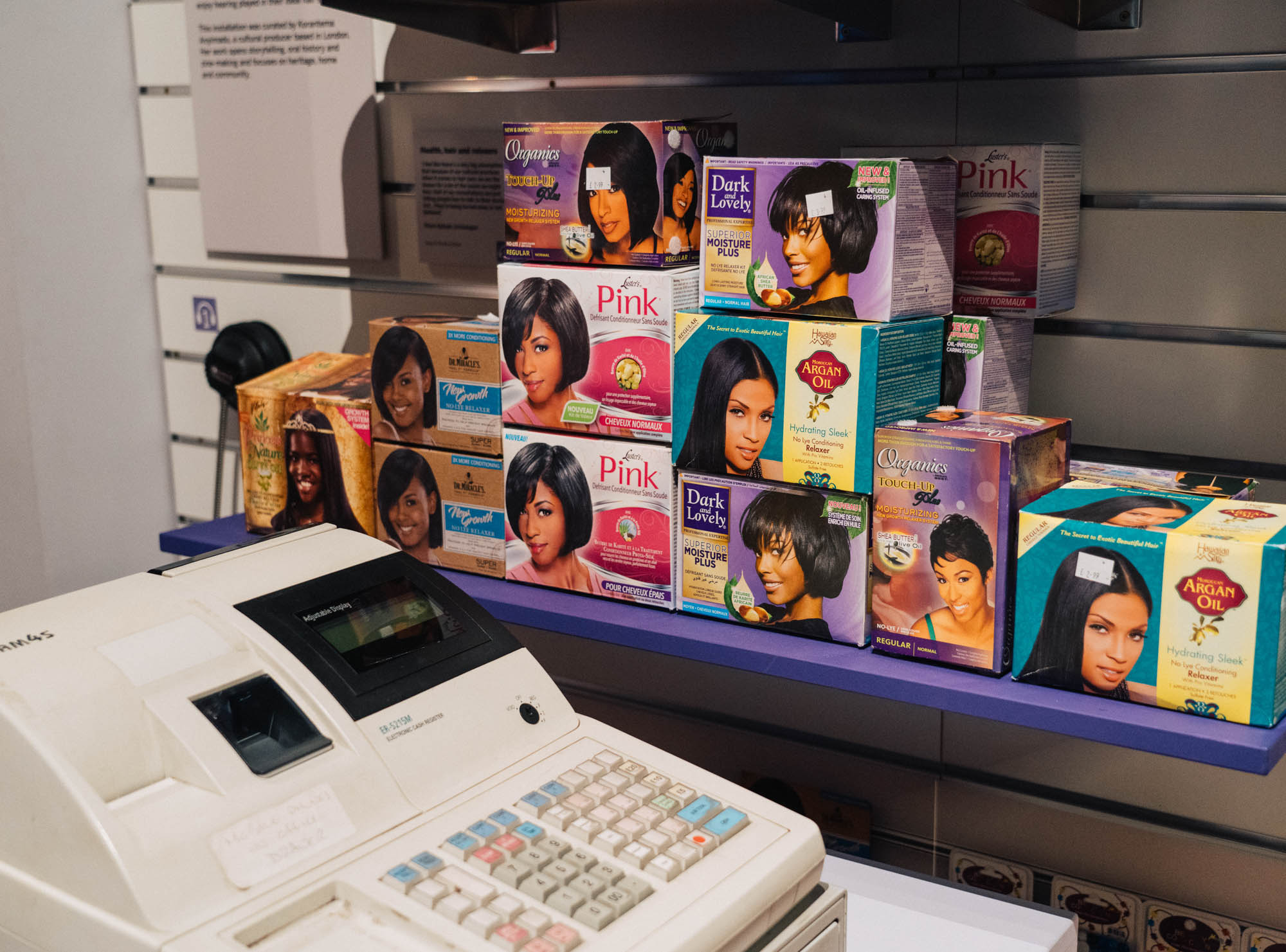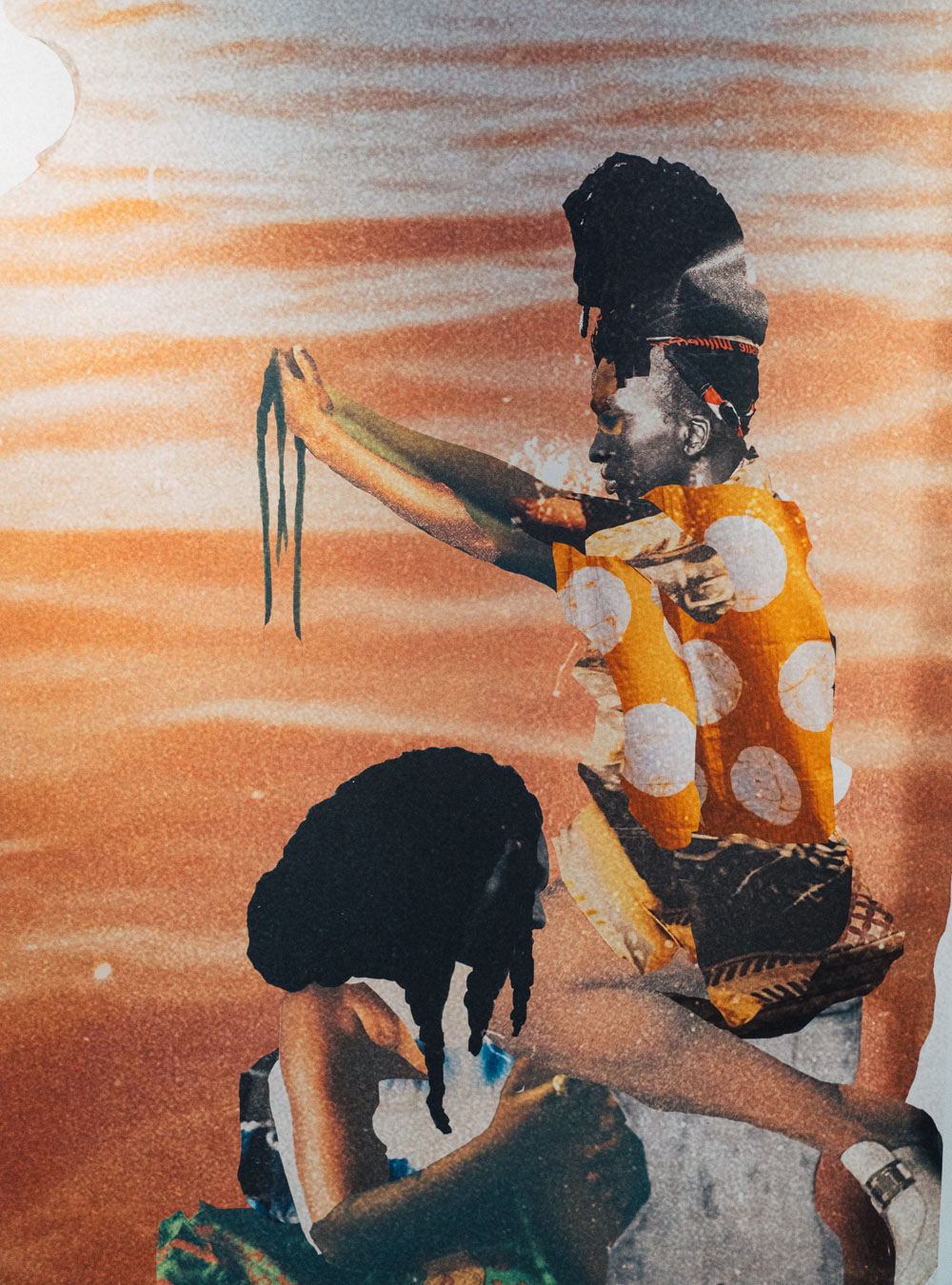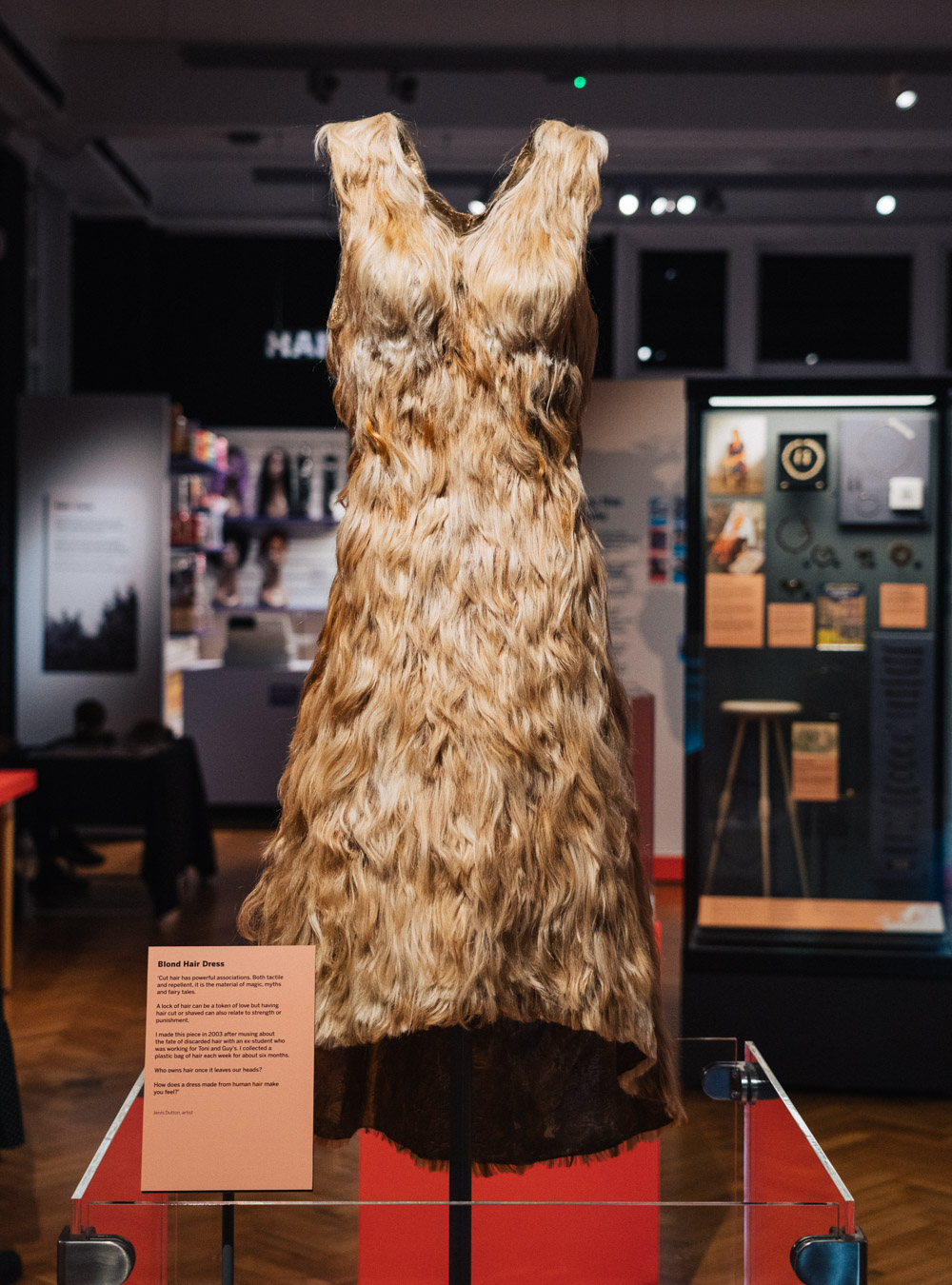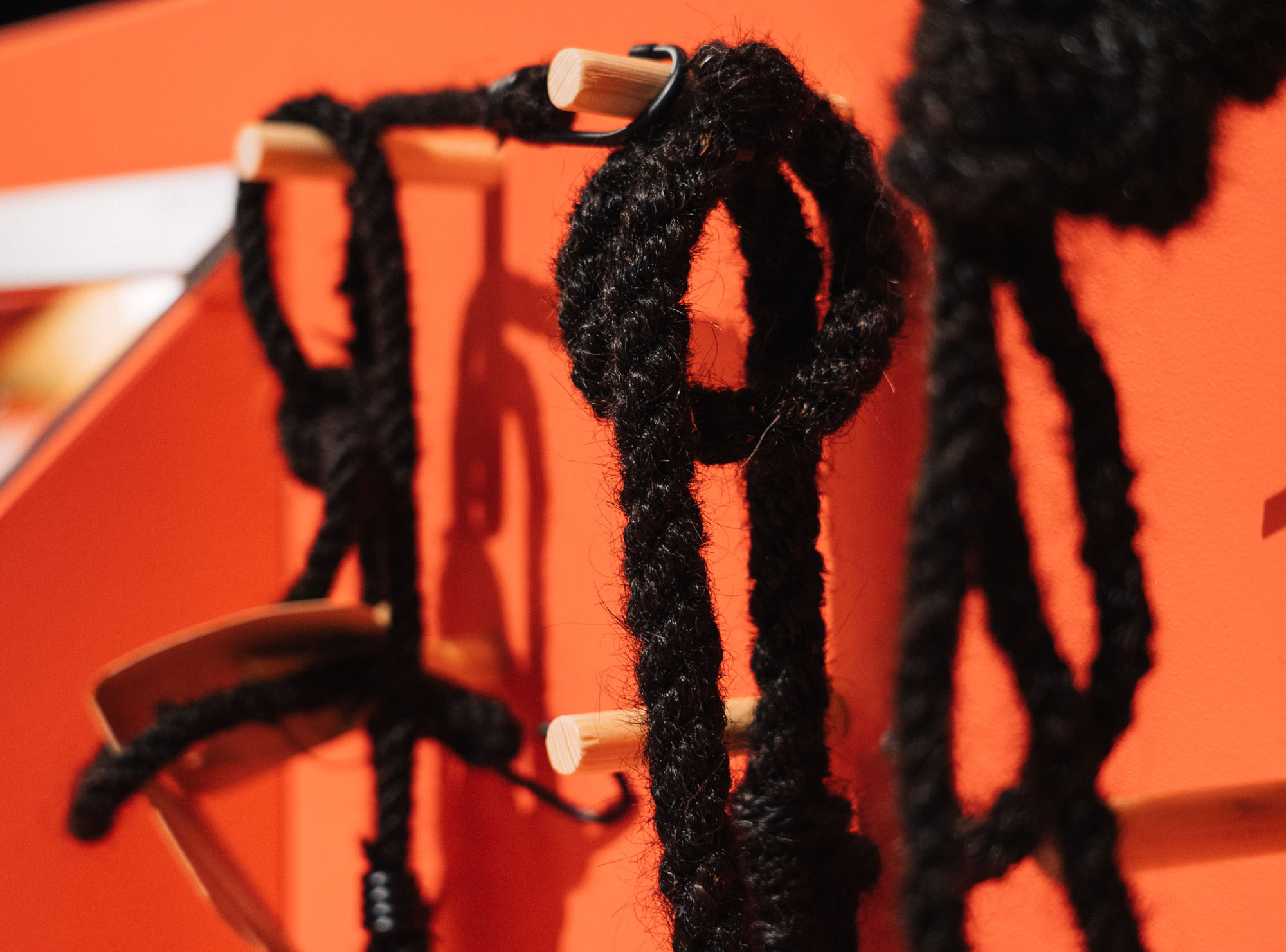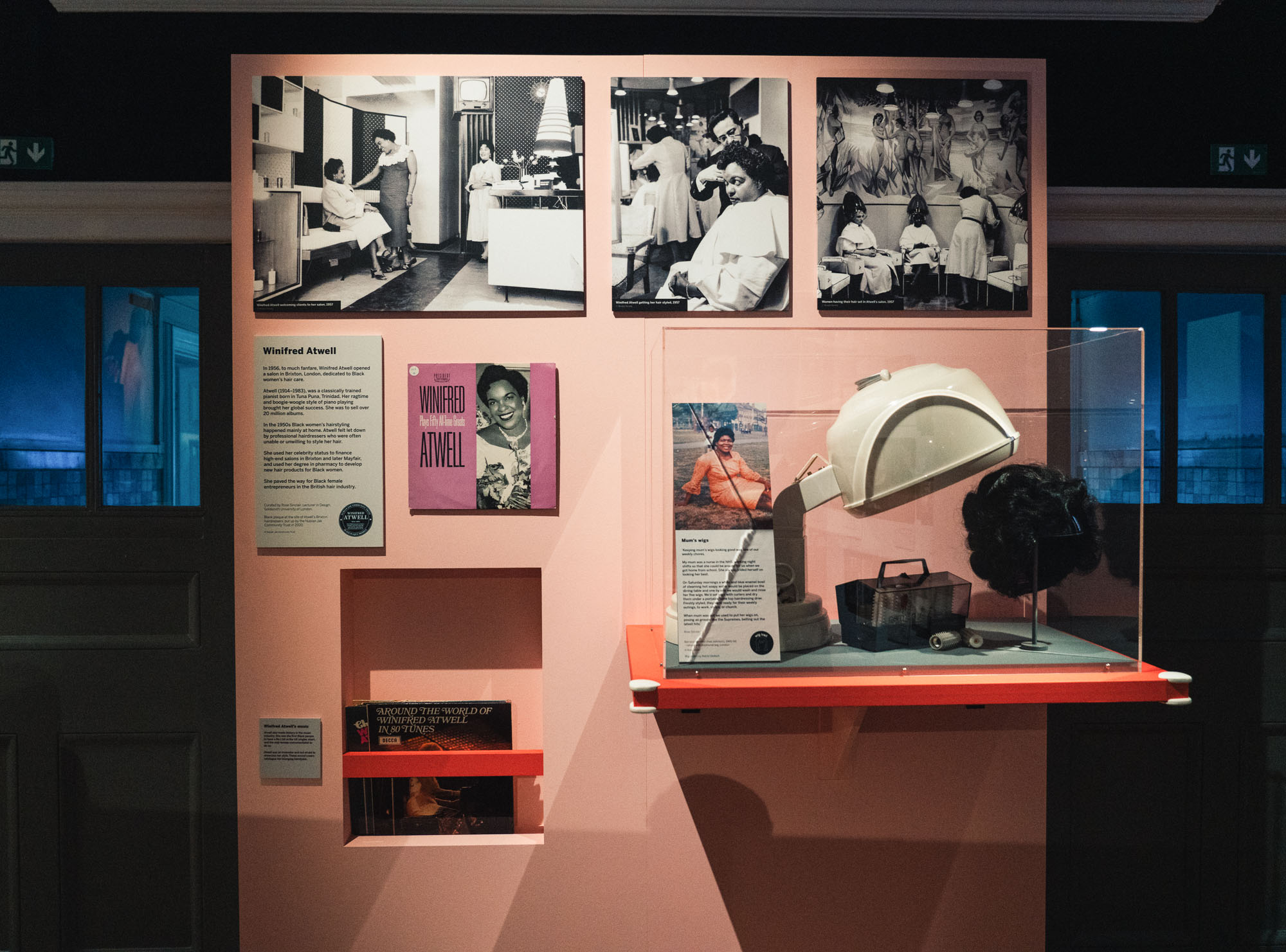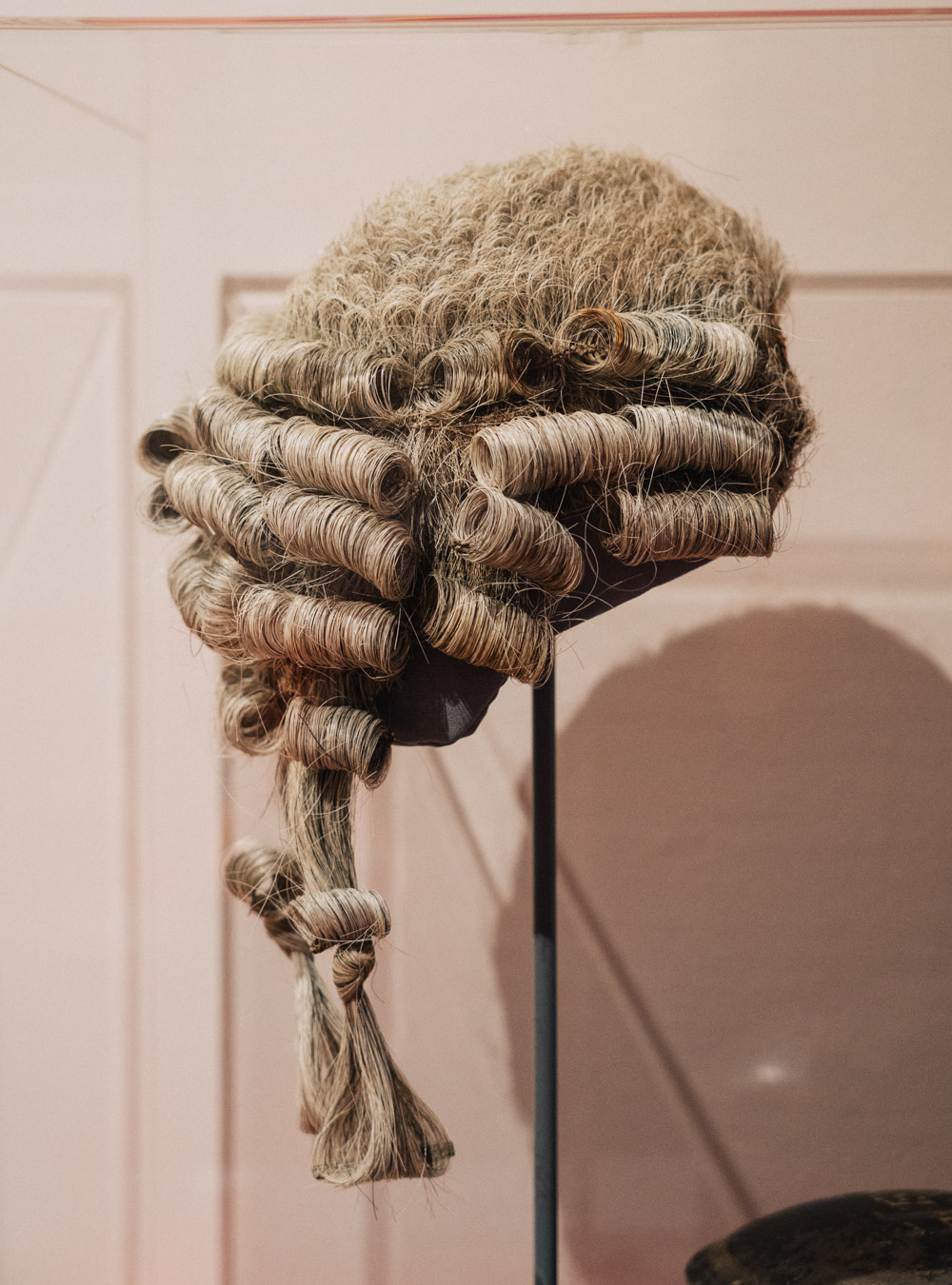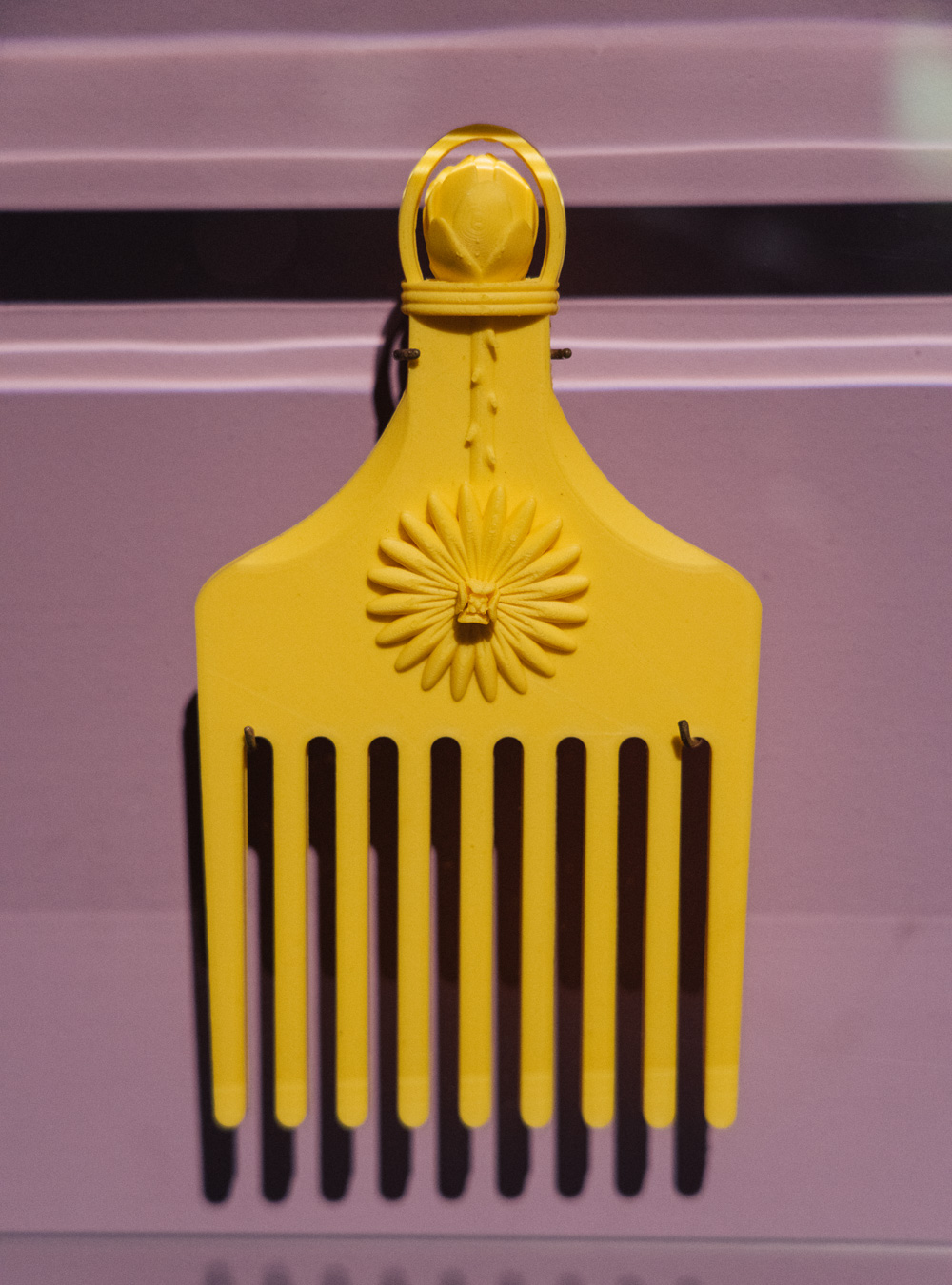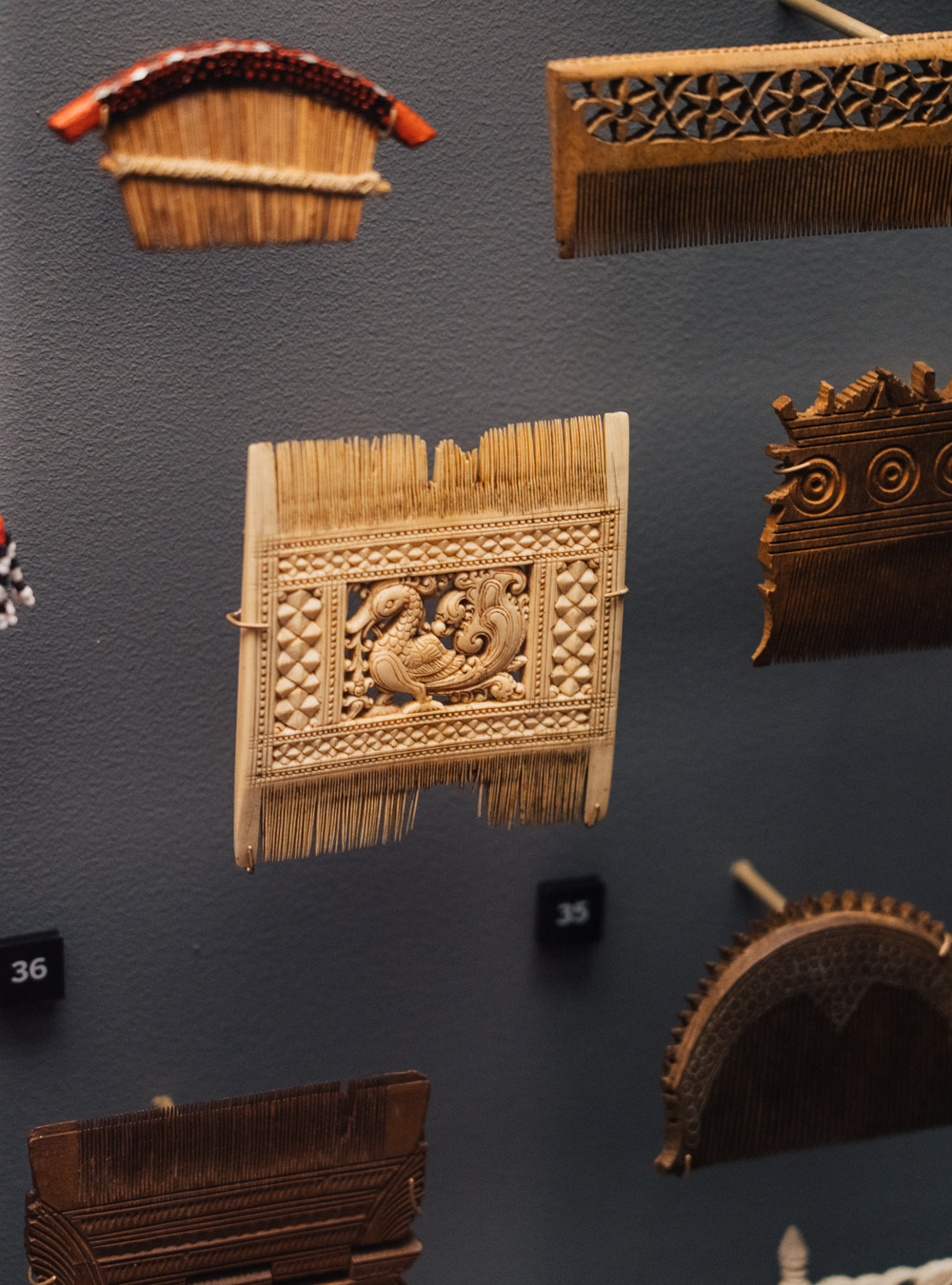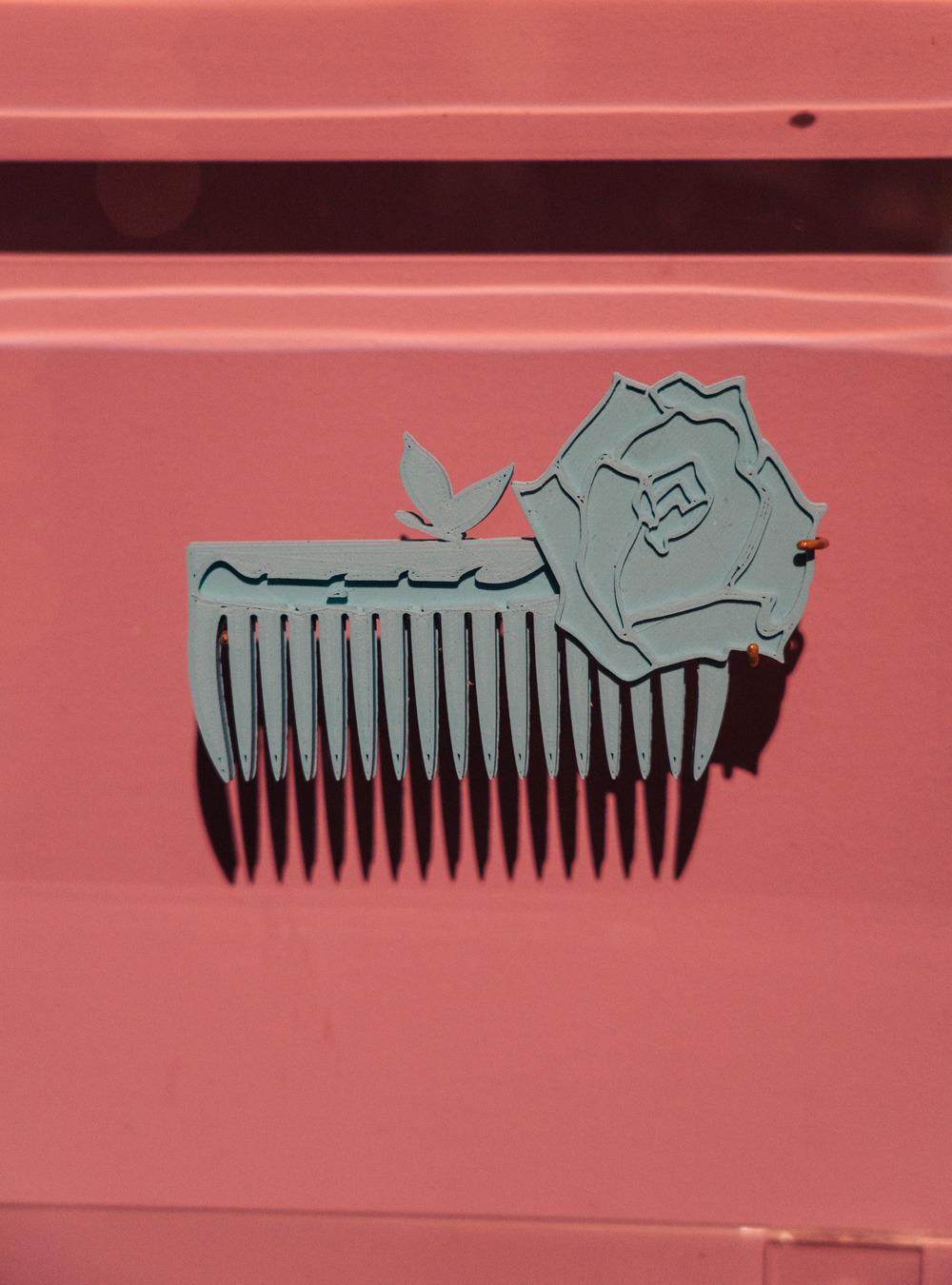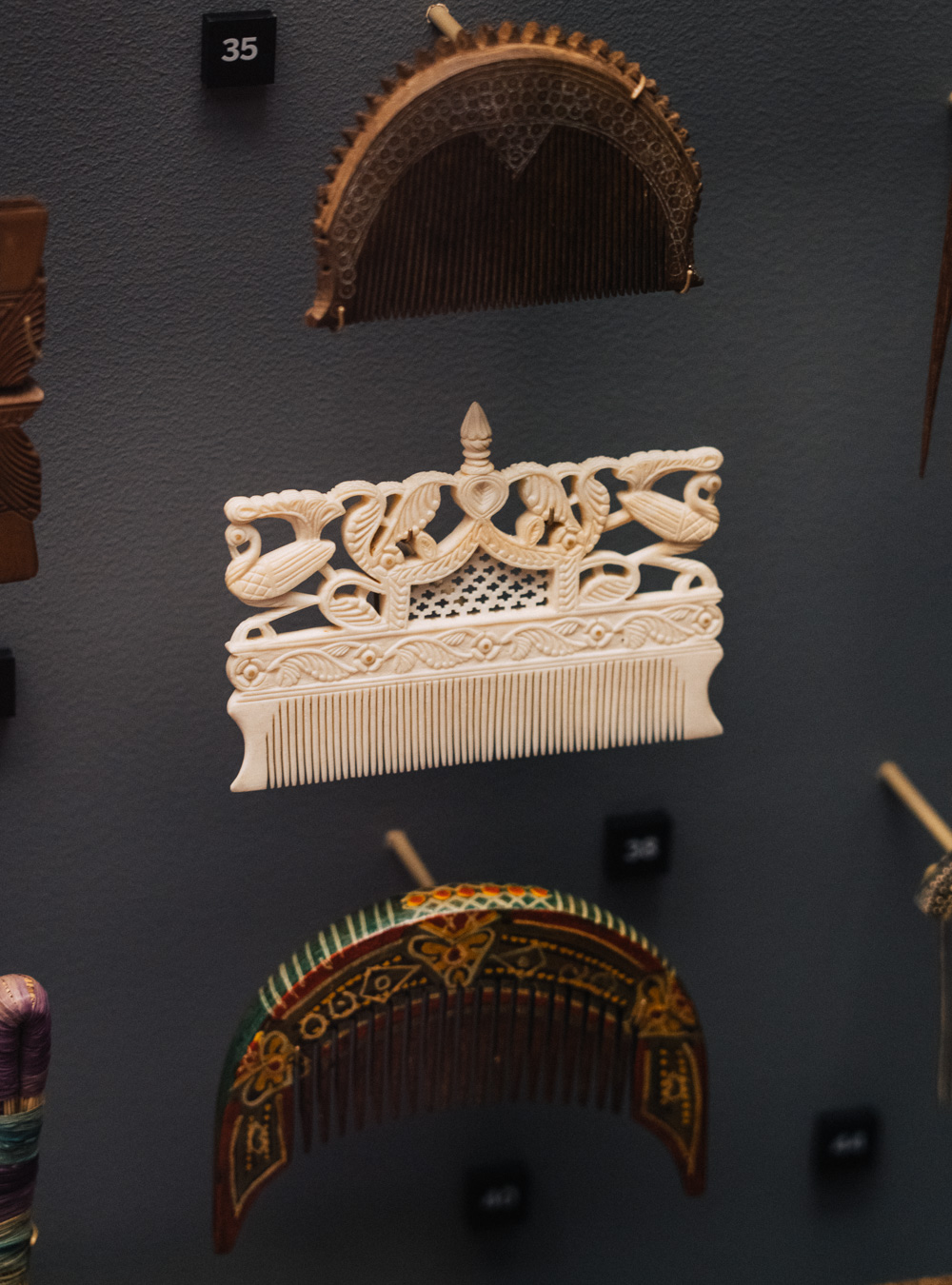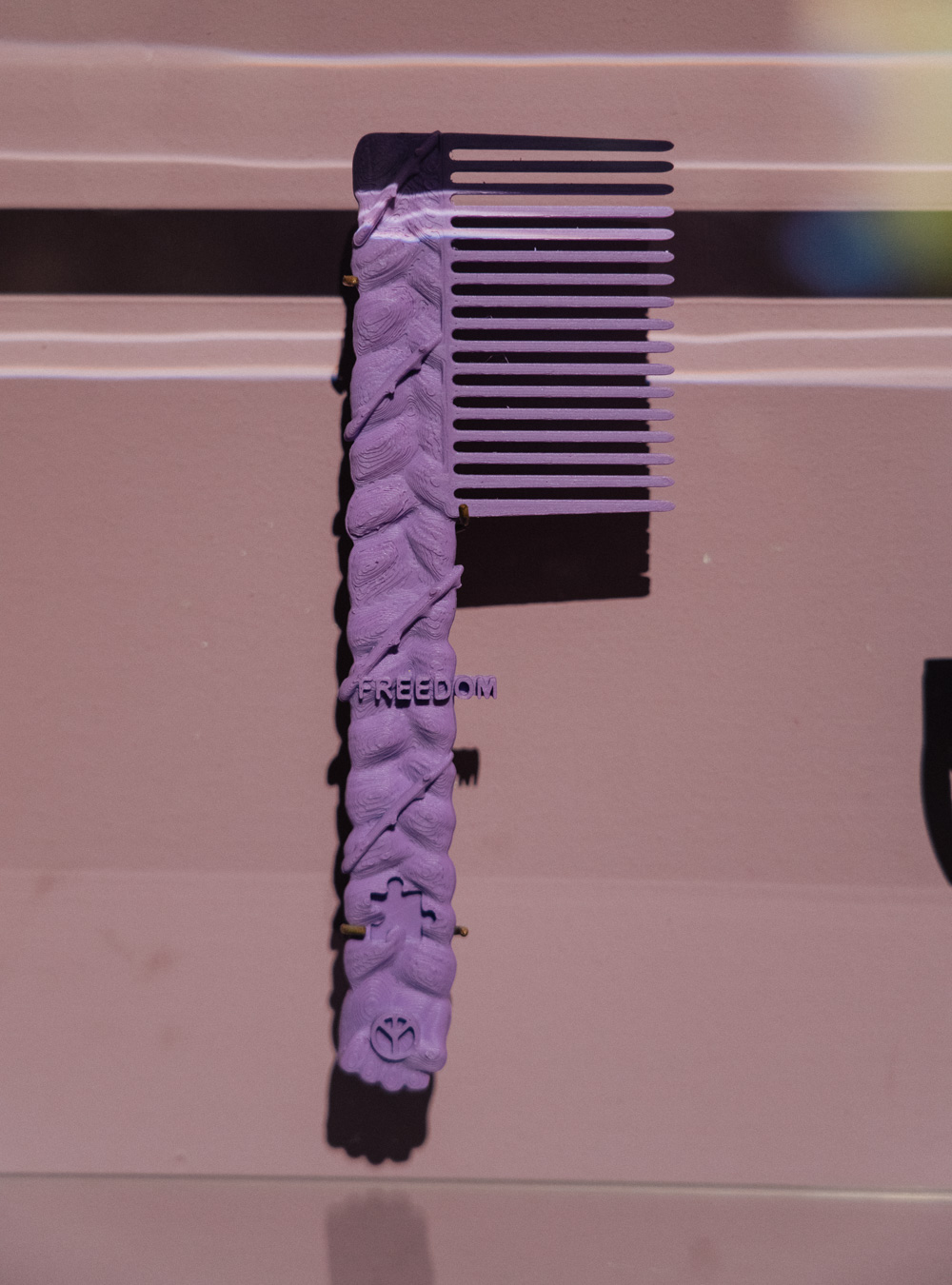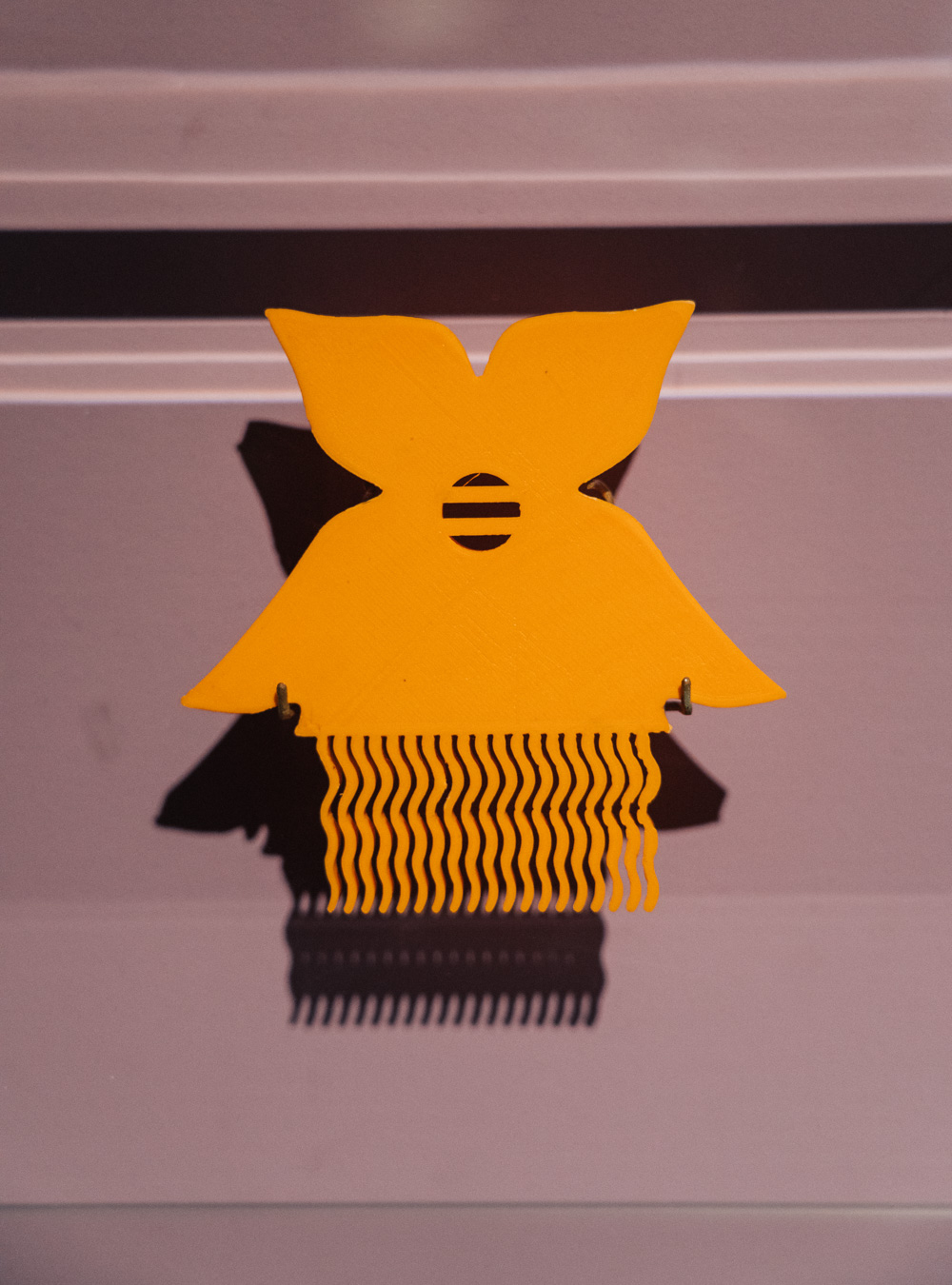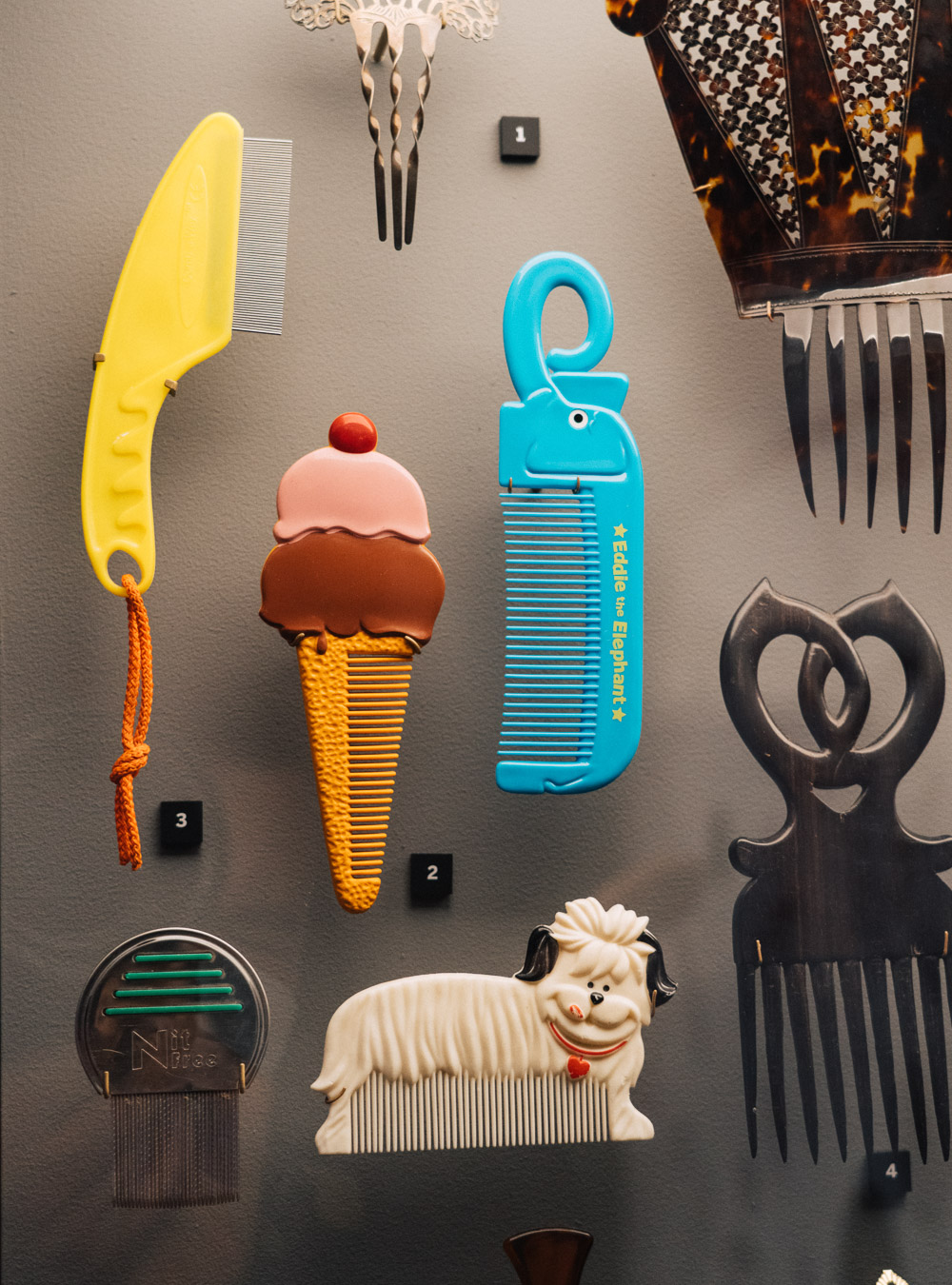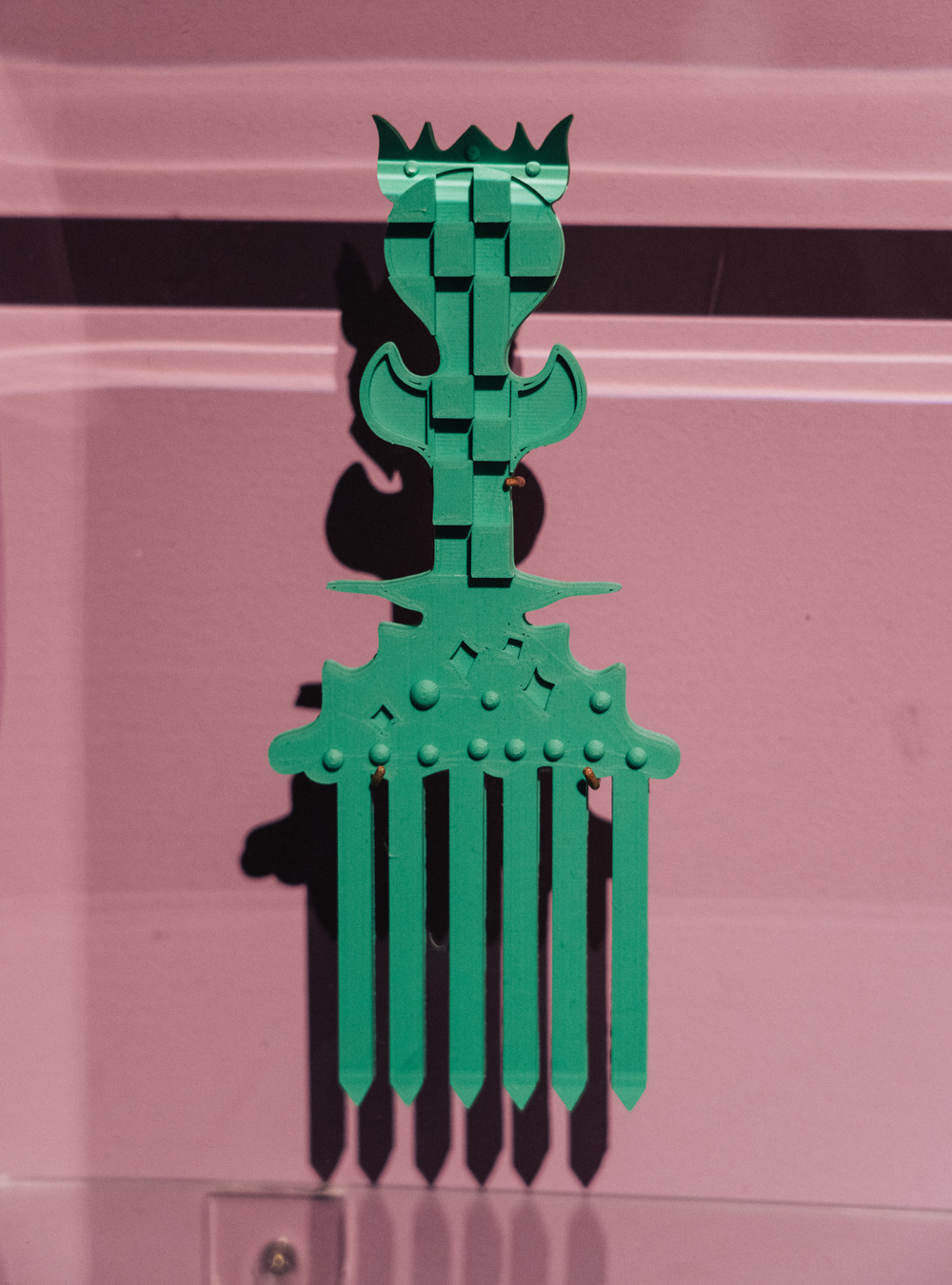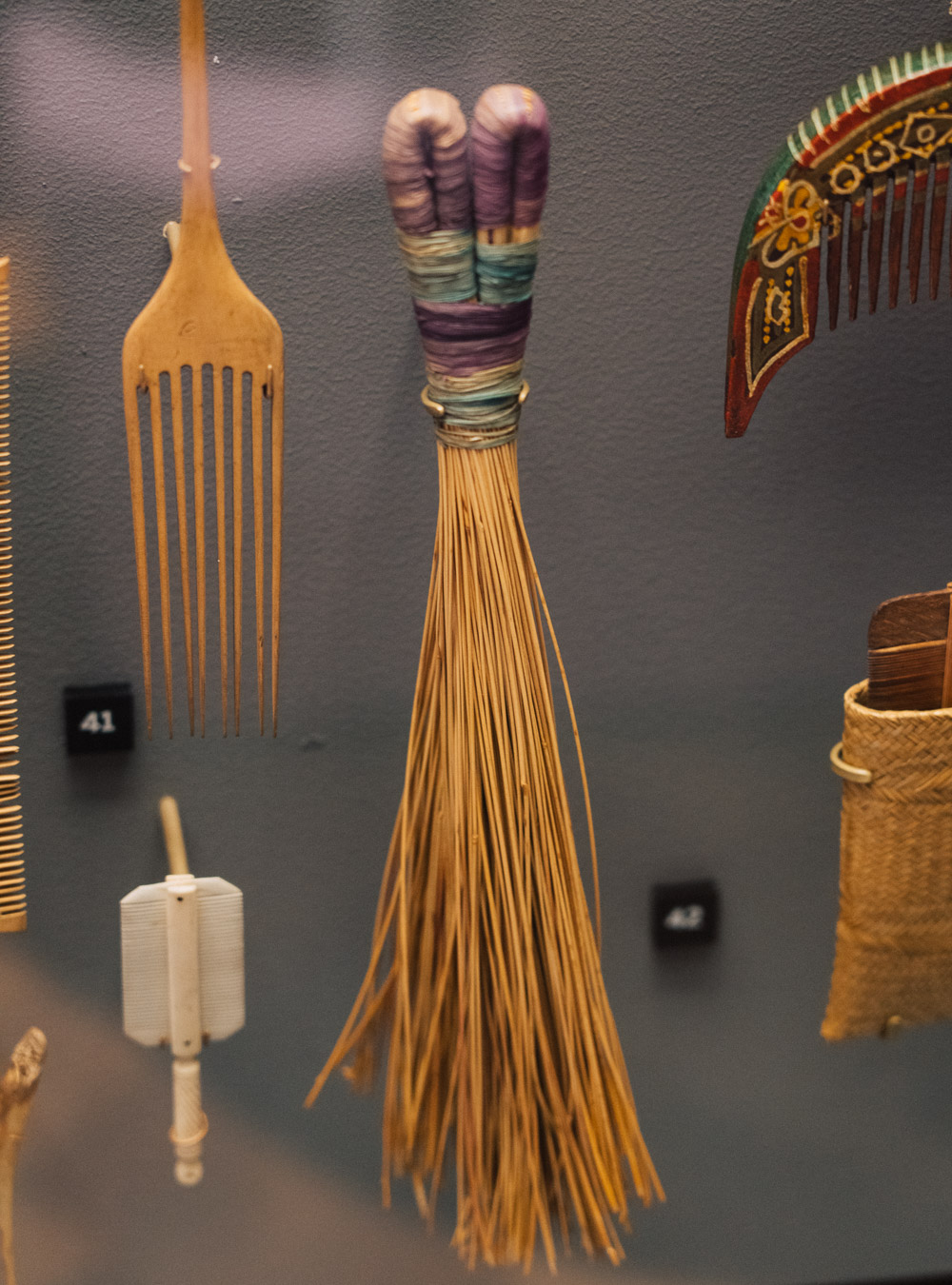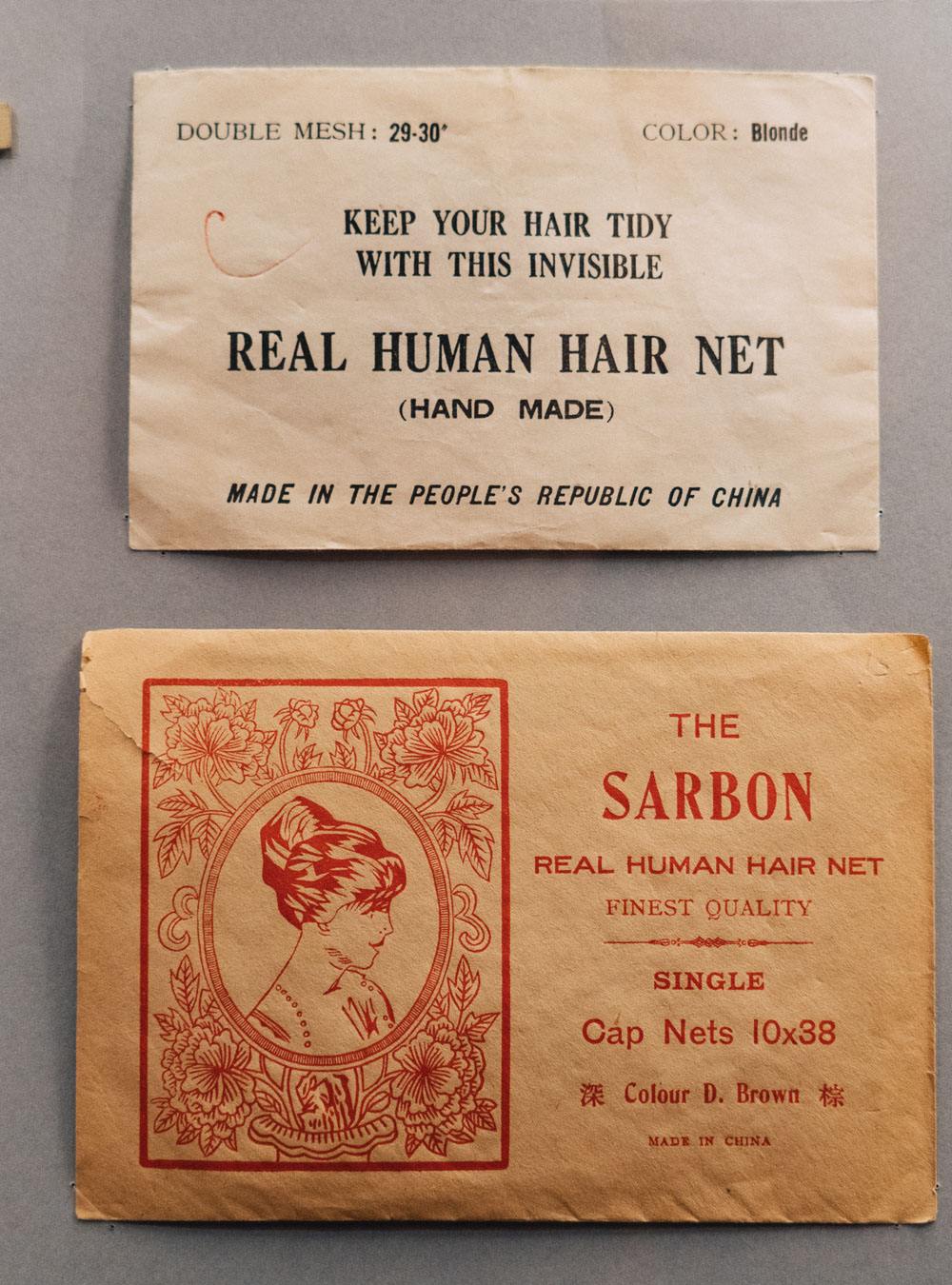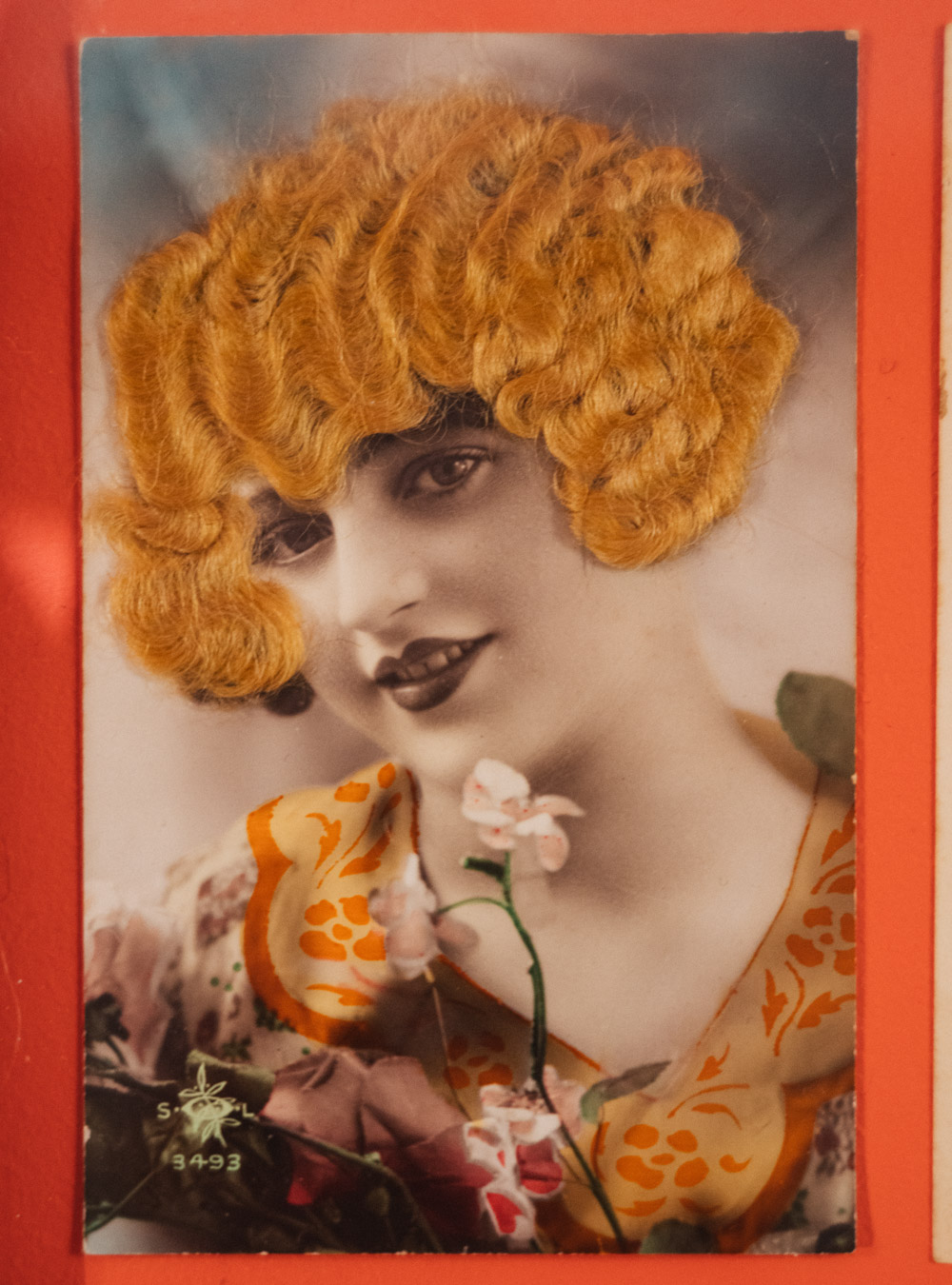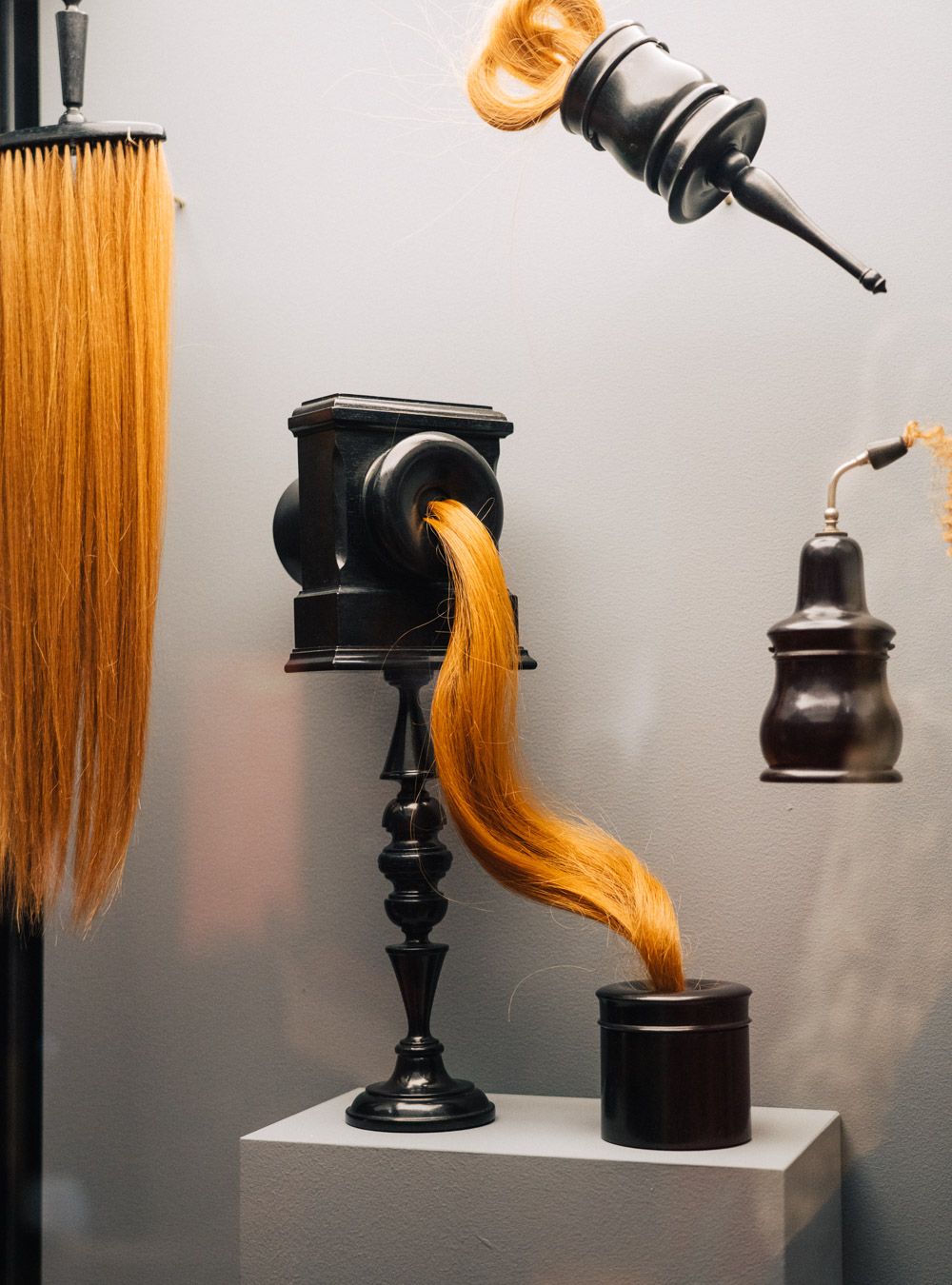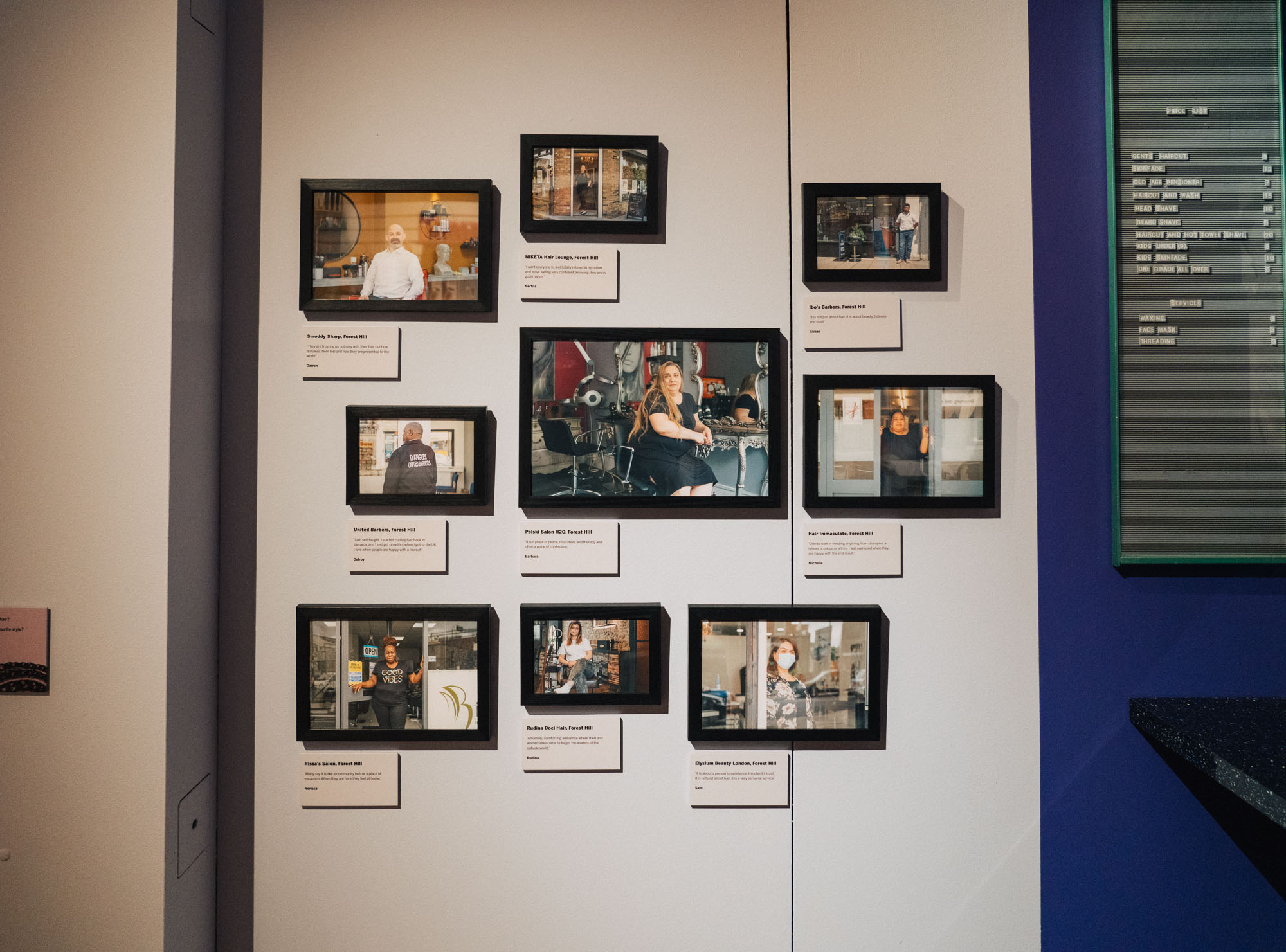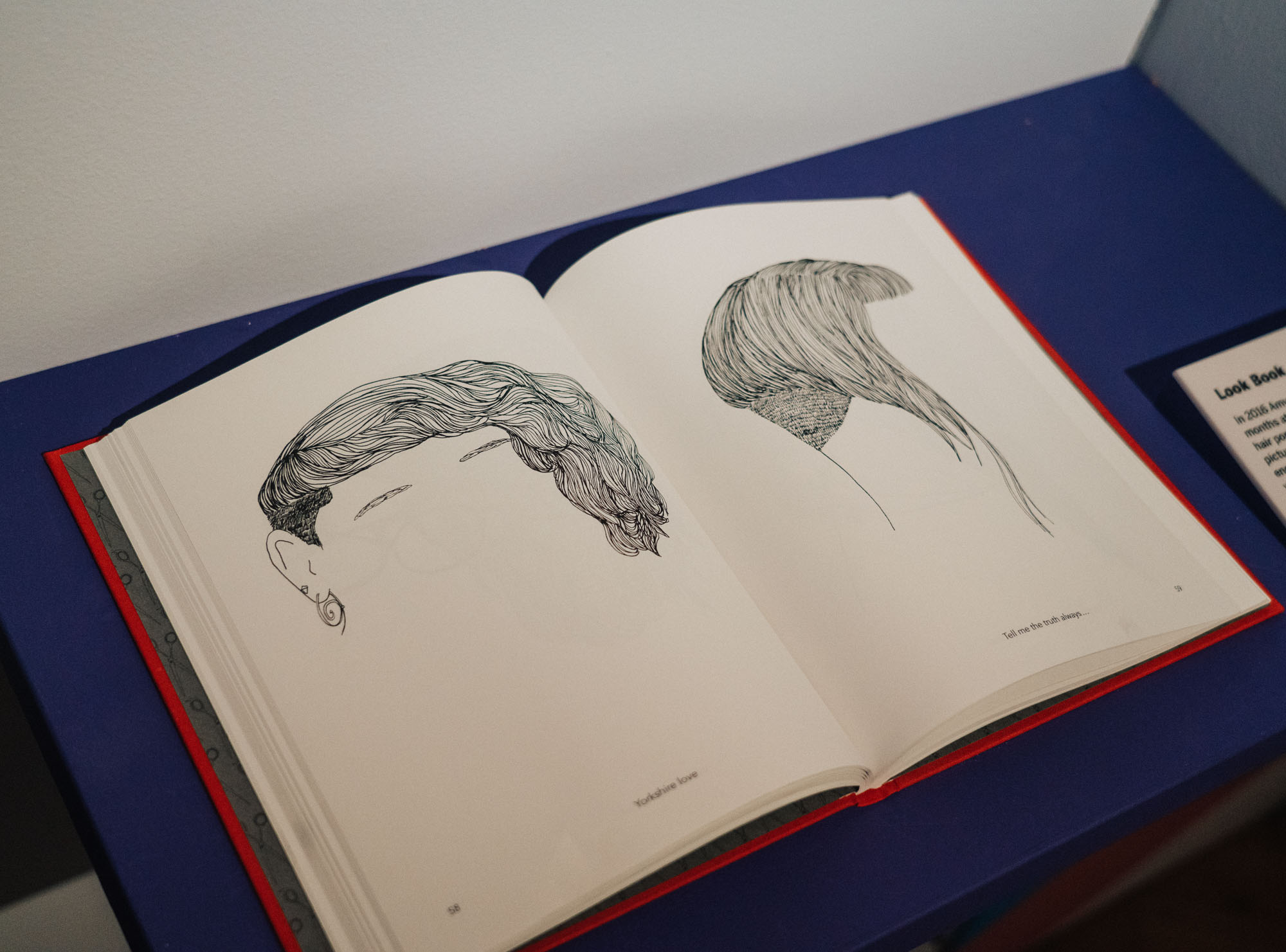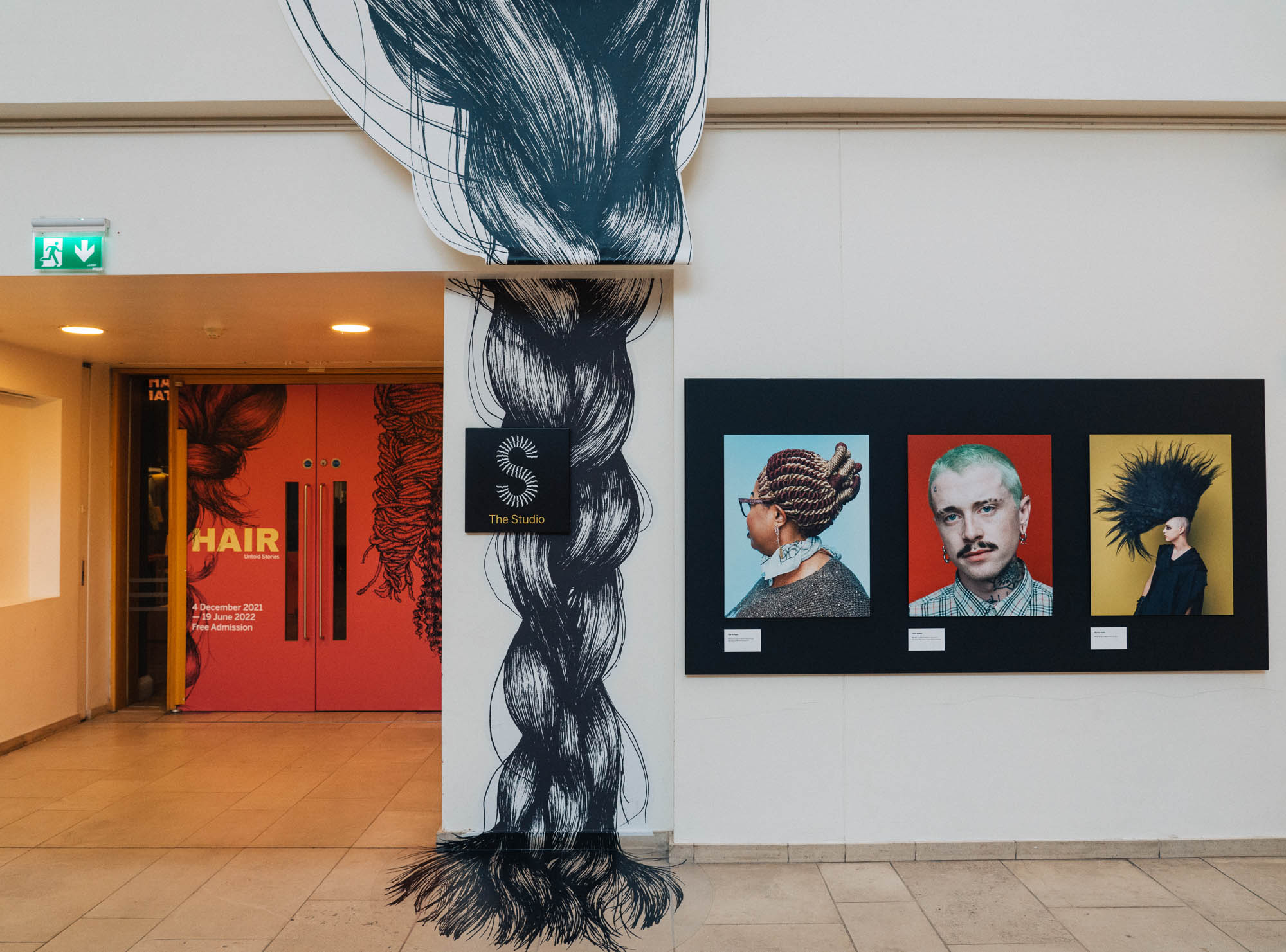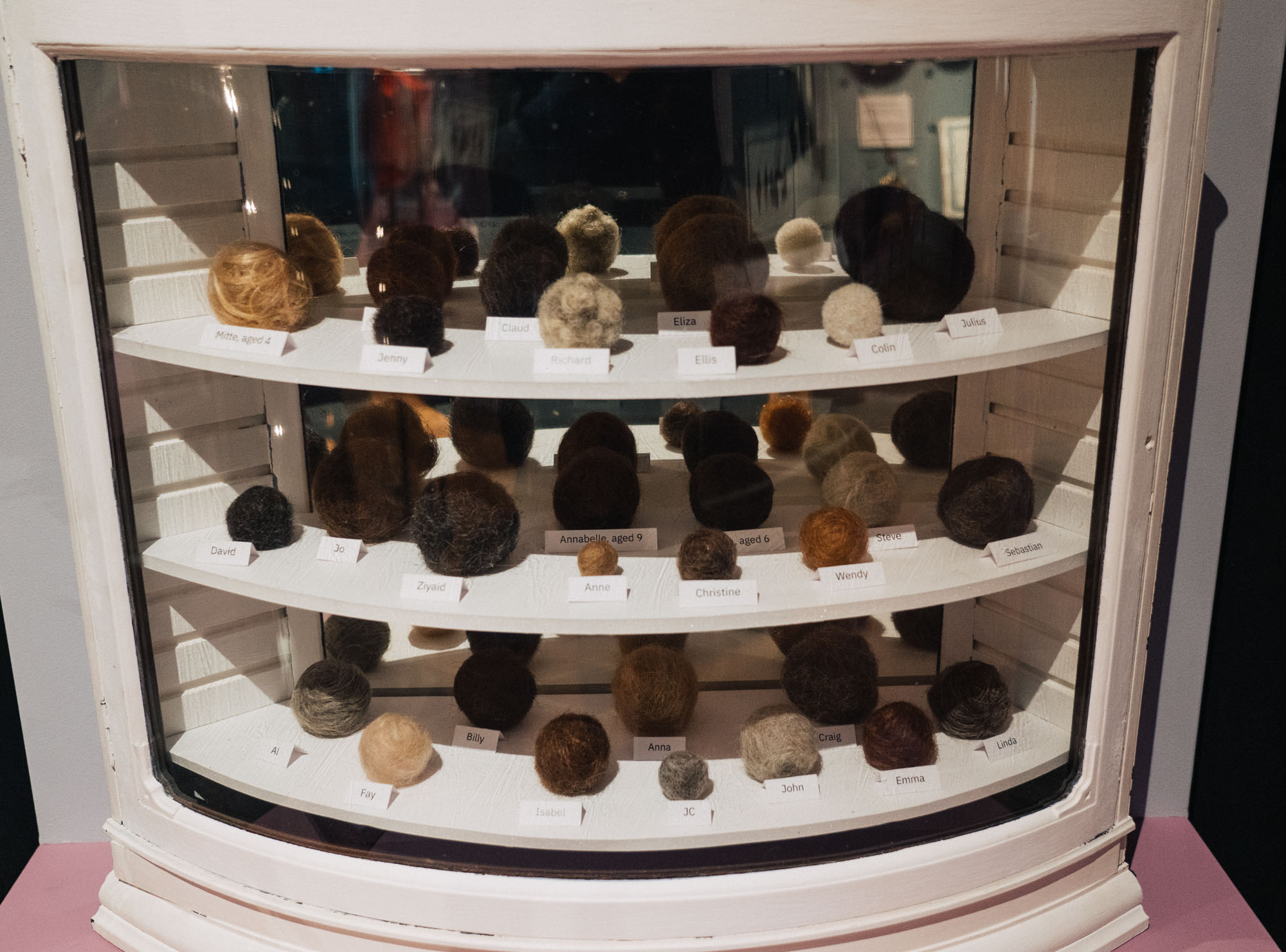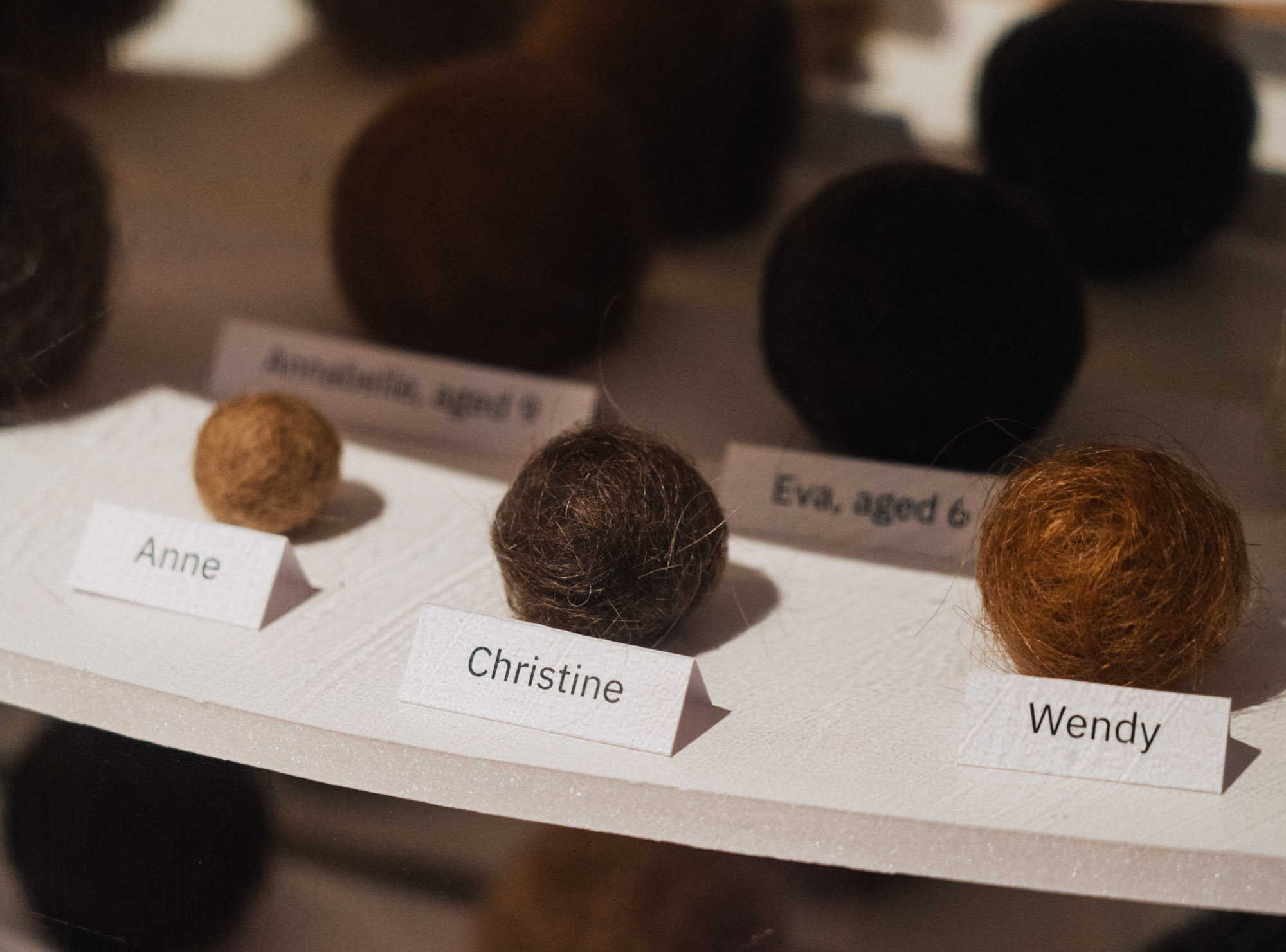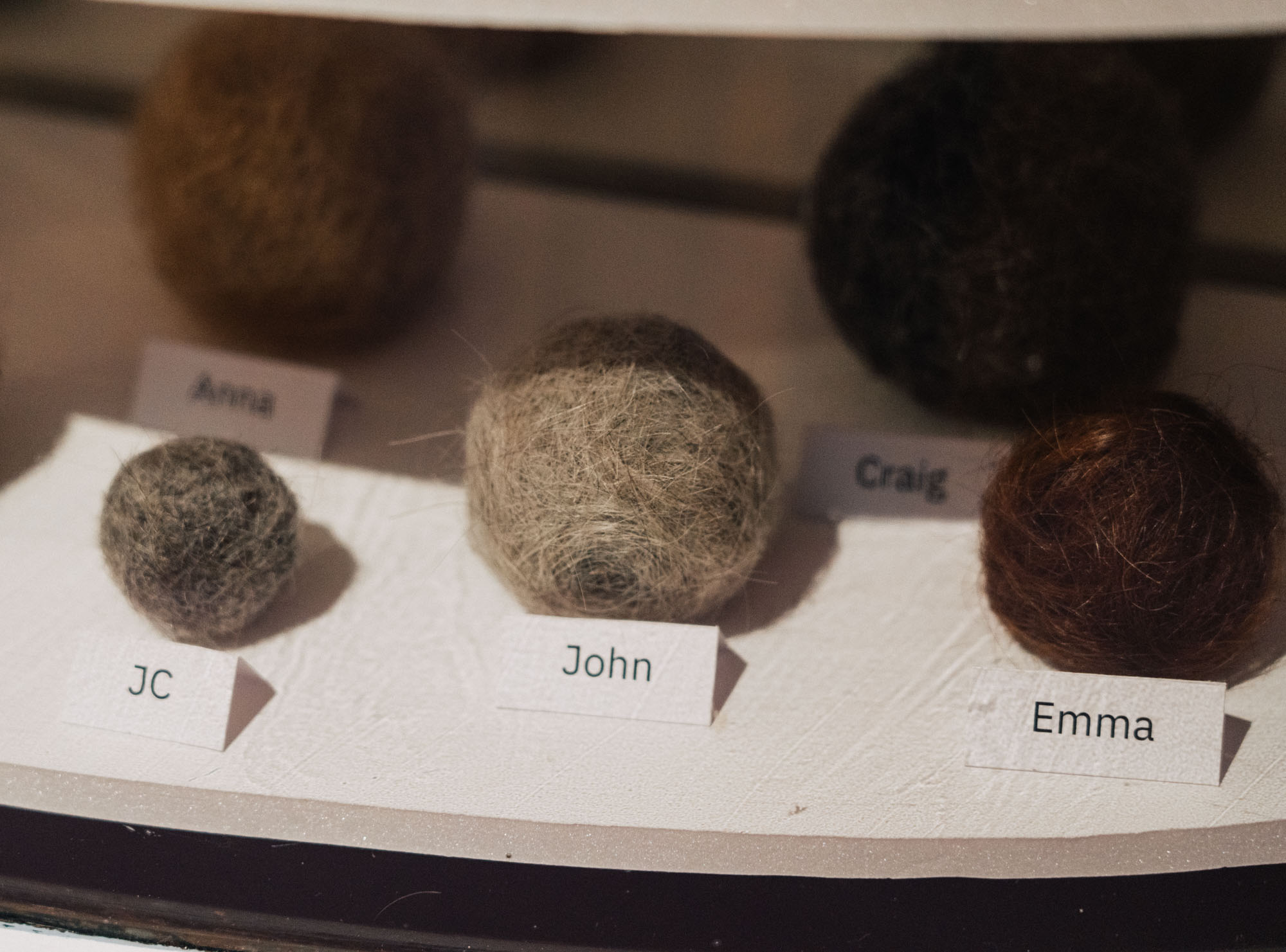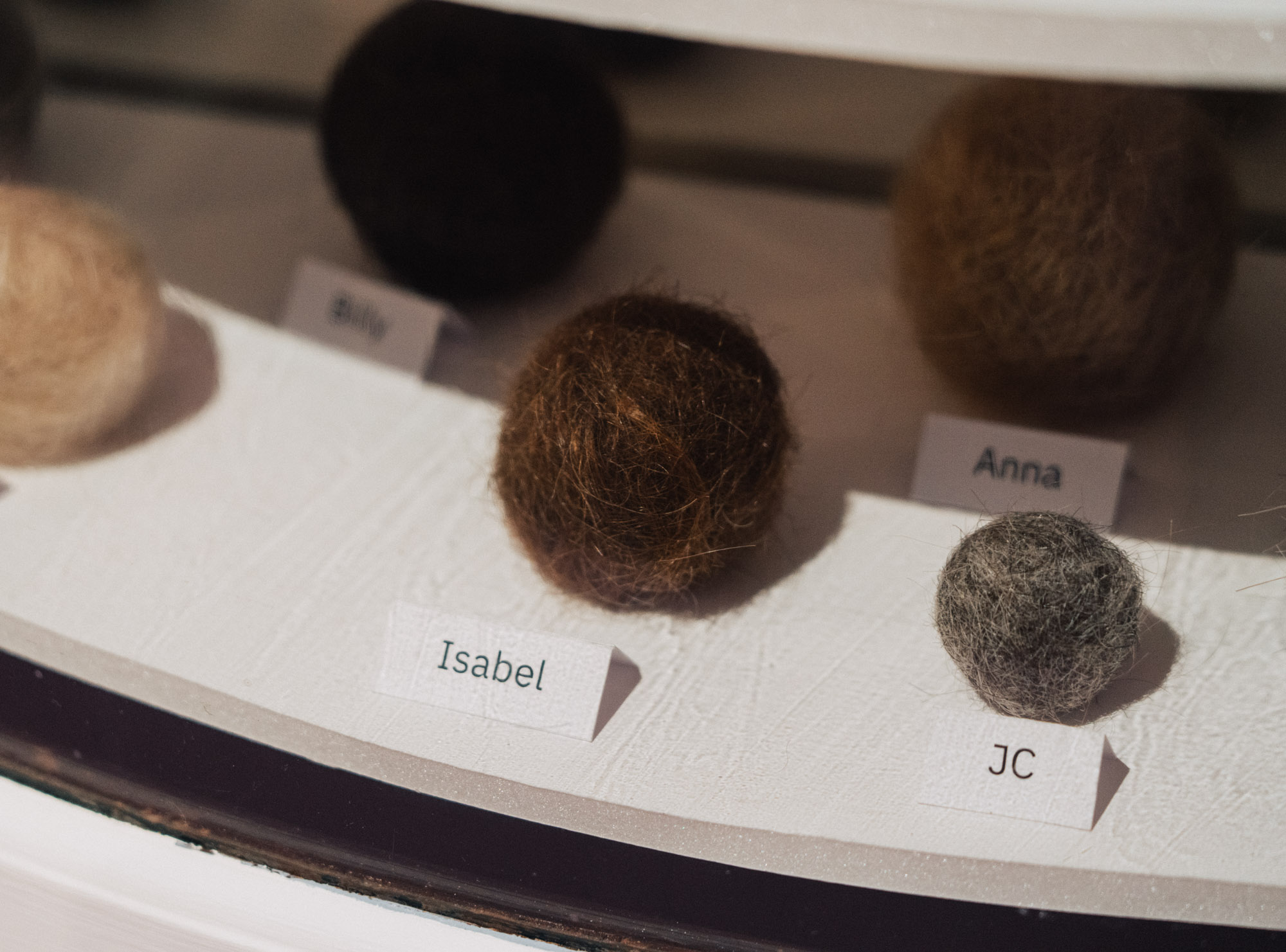- Material Curl
- Material Curl
- Material Curl
ART + CULTURE: Our beloved fibre takes centre stage in Hair: Untold Stories, a new exhibit at the Horniman Museum & Gardens interweaving personal and public histories
Interview: Hasadri Freeman
Photography: Panos Damaskinidis
Special Thanks: Emma Tarlo, Rose Sinclair, Dr. Sarah Byrne, + The Horniman Museum & Gardens
Mentions: Habiba Nabisubi, Korantema Anyimadu, Amy Pennington, Rambisayi Marufu, Ebun Seyi Oduwole, Panos Damaskinidis, Jenni Dutton, Open Barbers, Jane Hoodless, The New Age of Trichology
“There’s the adsorbent properties—that’s ad-, not ab-, meaning it pulls substances to its surface…it’s what makes it so good for cleaning up oil spills! Then there’s the visual and material aspects, and of course we’ve also got to consider its properties as a fibre, incredibly strong and incredibly fine. It bears a strong relationship to identity and race; there’s discrimination and loss to consider, and then of course there’s all the other hidden histories.”
Nylon? Cotton? No, the fibre that consultant curator Emma Tarlo is talking about is hair, the protagonist of the new exhibition Hair: Untold Stories that she co-curated with Dr. Sarah Byrne at the Horniman Museum & Gardens, on display through to 19 June 2022.
No property of the strand is left unturned in this comprehensive and playful exhibit, which in the museum’s own words, “puts the substance before the style and unlocks the untold stories of hair.” From more child-friendly sections like “guess the fibre” that tie into intergenerational installations like Korantema Anyimadu’s ‘Hair Shop,’ which reflects on Black women and non-binary people’s hair experiences in the UK, we’re encouraged to weave strands of our own personal history with that of others, even those long passed. That deeply personal take on hair and the cultural, material, and spiritual power with which we imbue it remains a through line throughout the exhibition.
The curatorial approach is certainly anthropologically progressive, in turning that questioning eye towards oneself throughout the research process, and perhaps all those involved have been affected by it. The artist Habiba Nabisubi, who created the promotional drawings for the museum, has personal experience with trichotillomania, and Rose Sinclair, who documents one of the first salons catering to Black women in the UK fondly remembers her own ‘wig story:’ “Growing up, one of our tasks would be to wash all my mother’s wigs on a Saturday morning, because she was quite busy working as a nurse with the NHS. Once we’d style them we’d put them all on and pretend to be the Supremes,” Rose tells me when I meet her at the Horniman. One verdant wig on display is accompanied by the story of its owner, who chose a bright green bob to replace her hair when she was undergoing chemotherapy, and a barrister’s wig is brought to life by Lady Justice of Appeal Ingrid Simlir, who reflects on the weighty responsibility her wig embodies.
For those who narrate their wig stories within the museum, seizing control of their own appearance hair-first is often the step towards a bigger journey of self-actualisation. And the history of that fact within human experience is placed on display, as we discover artefacts past and present paying homage to our powerful relationship to the fibre.
The collaborative and multifold nature of the hair trade is exemplified in the historical artefacts on display, like hairnets made from Chinese hair for European women (sometimes shipped from China to be dyed ‘European colours’ in England and then sent back to China for fabrication before their final journey to the heads of English women of fashion). There’s also Kiribati hair armour in which hair is used for stitching, Victorian era ‘hair receivers’ contrasted by a Yao priest’s hat and German 20th century ‘Hairy Postcards’ a few steps away. But as much as the exhibition reaches across time and place, into the personal and the public, it also shows local pride, spotlighting hairdressers from around the Forest Hill area, where the museum is based, as well as contributions from artists and community fieldworkers in the area who have used hair as a springboard in their works. The approach gives us an example of how hair can connect people and communities and this was something both curators were keen to convey.
INFRINGE’s collaboration in 2018 with Tarlo’s earlier exhibition Hair: Human Stories at our very own Library Space in Battersea led to our Cult Hair series also being included at the Horniman, as a prelude to Hair: Untold Stories. Tarlo and Byrne were fascinated the in-between art and hair space and by the eye-catching nature of the Cult Hair series as a form of everyday personal art. “It’s not about celebrities but about ordinary people, and the extraordinary things they do with their hair.” That joyous beauty-in-personhood seems to arch over the rest of the exhibit, too.
Hair: Untold Stories is free and open to the public until 19 June 2022 during museum hours at the Horniman Museum and Gardens. It is curated by Horniman Senior Curator Sarah Byrne in partnership with Emeritus Professor of Anthropology Emma Tarlo and Goldsmiths, University of London. Hair: Untold Stories is the inaugural exhibition created for the Museums and Galleries Network for Exhibition Touring (MAGNET).
- ANTHROPOLOGY OF HAIR
- ANTHROPOLOGY OF HAIR
- ANTHROPOLOGY OF HAIR
- ANTHROPOLOGY OF HAIR
- ANTHROPOLOGY OF HAIR
